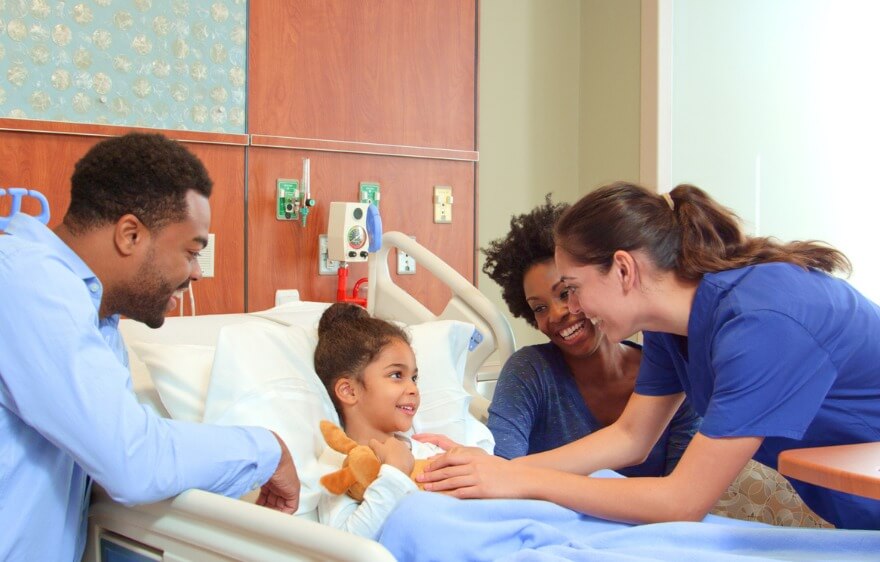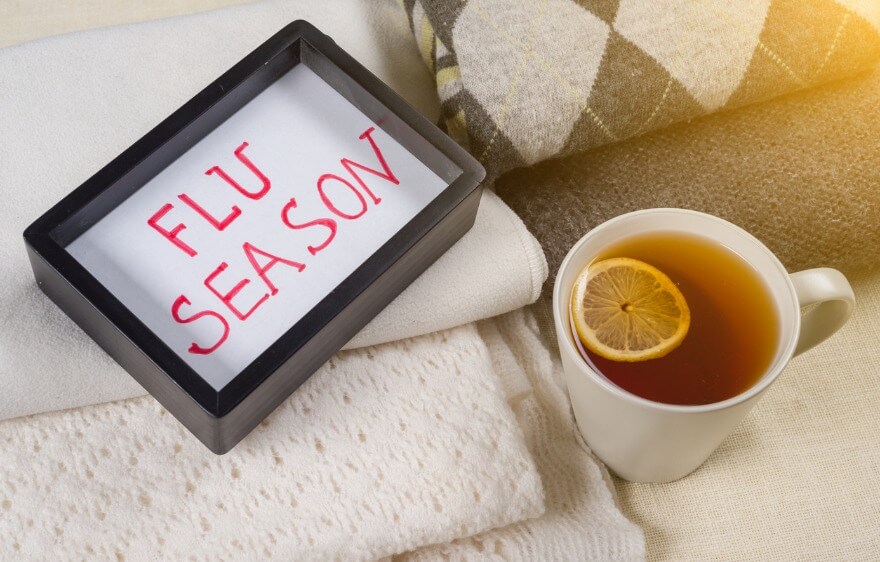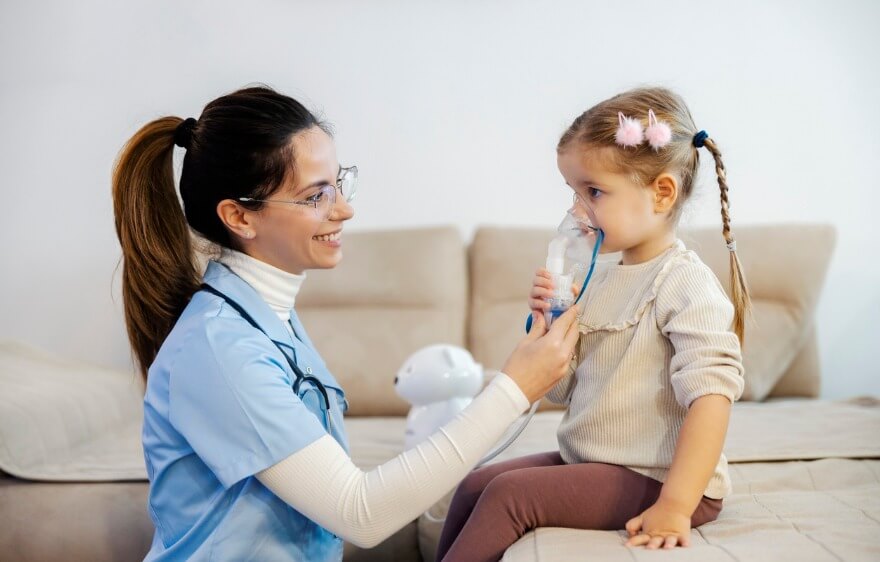Along with the many hats you wear as a nurse, a good nursing bag is your number one accessory! Nursing bags make high-quality care possible, but they also require careful management to keep your clients safe and healthy. As a home health nurse, you’re part of an amazing profession built on bringing care and compassion right into people’s homes. And with this heroic role comes the responsibility of working in situations where vulnerable people are managing chronic conditions and recovering from illness.
What’s inside your bag, and more importantly,howyou manage it, is crucial to ensuring safety and promoting your own well-being. This is where your home health bag technique comes into play.
To help you succeed in this all-important area, we’re sharing practical information on developing a winning home health bag technique. We’ll help you learn why this concept is so important and how you can use it to enhance your practice as a nurse and keep things super safe during your home visits!
What Is Home Health Bag Technique?
Before we dive into the details, let’s start with a quick definition. Home health bag technique basically means the practice of keeping all equipment, supplies, and medications organized and clean while preventing contamination or cross-contamination during home visits. It’s about managing your home health bag in such a way that infection control and safety are always a priority.
In short, it’s the art of keeping your nursing supplies safe and hygienic while on the go.
In the home setting, the risk of transmitting infections can be extremely high. Whether you’re visiting patients with open wounds, administering injections, or delivering care to immunocompromised individuals, there’s a lot at stake. And your home health bag technique represents the first line of defense against the spread of pathogens.
Why Home Health Bag Technique Is Important
You might be thinking, “I’ve been nursing for years — why do I need a special technique?” The simple answer is that home environments aren’t controlled. Compared to hospitals or clinics, homes vary far more widely in cleanliness, space, and environmental conditions. Family members may not always follow hygiene protocols, and pets can introduce bacteria or other contaminants. As a nurse, you’re in charge of minimizing risks, and your bag technique is one of the most effective ways to do that.
Proper management of your home health bag helps prevent cross-contamination between clients, especially when you’re managing multiple cases in a single day. A single misstep can result in a cascade of issues — both for the health of people you care for and for your own safety. The last thing you want is for your equipment or supplies to become a vector for bacteria or viruses.
In addition to infection control, a good bag technique helps you stay organized and ensures you have everything you need for each visit, reducing the likelihood of forgetting important items that could affect the quality of care.
How to Prevent the Spread of Pathogens During Home Visits
Let’s talk about how to reduce the risk of infection when you’re on a home visit. Having your home health bag technique on lockdown will make a big difference in preventing the spread of pathogens, but it also requires you to be aware of a few key infection control principles.
Hand Hygiene Is Your Best Friend
Good hand hygiene is the cornerstone of infection control and one of the fundamental best practices for a nurse. Before and after each home visit, wash your hands thoroughly with soap and water or use hand sanitizer when soap isn’t available. But it doesn’t end there — frequent hand washing or sanitizing during your visit is equally important. You’ll need to cleanse your hands:
- Before touching your home health bag
- After touching any potentially contaminated surfaces, such as door handles or patient belongings
- Before and after administering medications, handling dressings, or doing any procedure that could introduce bacteria
- Before and after removing gloves or other protective equipment
Use Personal Protective Equipment (PPE)
While performing certain procedures or coming into contact with bodily fluids, using personal protective equipment (PPE) like gloves, masks, gowns, and eye protection is essential. Always ensure your home health bag contains appropriate PPE for every visit, and make it a point to wear the correct protective gear as necessary.
Don’t Forget Disinfection Protocols
Keep disinfectant wipes and sprays in your bag to clean any equipment that comes into contact with potentially contaminated surfaces. After each use, wipe down things like stethoscopes, thermometers, blood pressure cuffs, and other devices. A little extra attention to detail can go a long way in preventing the spread of infection.
Carefully Organize and Store Your Supplies
Your home health bag should have designated compartments or pouches for clean and dirty items. This separation helps reduce the risk of cross-contamination. For instance, medications, sterile dressings, and gloves should be stored separately from used or contaminated items like needles, syringes, and gauze. Keeping your bag organized not only helps with infection control but also ensures you have quick access to everything you need.
5 Tips and Best Practices for a Strong Home Health Bag Technique
Now that we understand the importance of the home health bag technique and how it helps prevent the spread of pathogens, let’s talk about practical tips and best practices you can follow to ensure your technique is up to par.
1. Choose the Right Bag
The first step in mastering the home health bag technique is selecting the right bag. It should be spacious enough to hold all your supplies but not so bulky that it’s hard to carry. Look for a bag with multiple compartments so you can separate clean from dirty items. Some nurses even opt for rolling bags, which can be a lifesaver when you’re carrying heavy equipment from one home to another.
2. Pack With Precision
When packing your home health bag, think about what you’ll need for each specific visit. Your general supplies may include:
- Gloves and PPE
- Stethoscope
- Blood pressure cuff
- Thermometer
- Wound care supplies
- Medications
- Syringes and needles — in a separate compartment
But don’t overpack! You don’t want your bag to become a cluttered mess — this will slow you down and may even lead to contamination. Always check your bag before you leave for a visit to make sure you have the necessary items for that patient.
3. Use Sterile and Non-Sterile Storage Options
Sterile items like syringes, dressings, and medications should be kept in separate, sealed containers inside your bag to avoid contamination. Similarly, ensure that non-sterile items like your stethoscope and blood pressure cuff are stored separately from anything that will come into direct contact with your patient’s body.
4. Remember the ‘Clean, Dirty, Contaminated’ Rule
An effective home health bag technique includes maintaining a strict “clean, dirty, contaminated” system. Keep clean items that won’t touch open wounds or bodily fluids in one compartment. Store used or dirty items in a separate zippered bag or pouch, and make sure contaminated items, such as used dressings, go into a disposal bag.
5. Don’t Overlook the Basics
While it might seem simple, keeping basic infection-control supplies like alcohol wipes, hand sanitizer, and paper towels in your bag is crucial. These can be lifesavers when you’re in a home with limited access to sinks or clean water. It’s always better to be over-prepared than caught without the right supplies.
Step-by-Step Guide to Home Health Bag Technique
Now that you’ve got the tips, let’s take you through a step-by-step guide to properly using your home health bag during a visit.
Step 1: Prepare Before the Visit
- Organize Your Bag: Check to ensure your bag is packed with all necessary items for the patient visit.
- Sanitize Your Hands: Wash your hands or use hand sanitizer before touching your bag.
Step 2: Arrive at the Home
- Assess the Environment: When you enter the home, assess the space for cleanliness and safety. Be mindful of potential hazards like pets, clutter, or areas that may require extra infection control measures.
- Sanitize Your Hands Again: Before you touch anything in the patient’s home, sanitize your hands.
Step 3: Set Up a Clean Workspace
- Create a Clean Zone: Lay down a disposable sheet, towel, or cloth to create a clean workspace for your equipment. If possible, designate a surface for your bag that can be sanitized afterward.
Step 4: Perform Procedures
- Use PPE as Necessary: Before performing any procedure that may expose you to bodily fluids, put on the appropriate PPE.
- Sanitize Equipment Between Uses: Make sure to disinfect any equipment between patients or between tasks to avoid cross-contamination.
Step 5: Clean Up and Dispose of Waste
- Dispose of Waste Properly: After your visit, safely dispose of used gloves, dressings, syringes, and any other contaminated items.
- Clean Your Bag: Wipe down your bag and the items inside, ensuring everything is disinfected before your next visit.
Step 6: Wash Your Hands
- Always wash or sanitize your hands before and after each patient visit.
Promoting Safety and Positive Outcomes
Home health bag technique is an essential part of ensuring patient safety, promoting infection control, and making your home health visits run smoothly. Whether you’re a seasoned pro or just starting out, paying attention to how you organize, store, and use your supplies can make all the difference in your practice. So, keep your bag organized, practice your home health bag technique, and continue delivering high-quality care with confidence.
At Care Options for Kids, we’re committed to empowering nurses by equipping them with the tools and knowledge they need to thrive in our healthcare community. To make this a reality, we provide unwavering support, including round-the-clock access to a helpline for nurses in need of assistance, no matter the time of day. We also offer mentorship programs, fostering growth and learning by connecting experienced nurses with those new to the field. Through personalized one-on-one guidance from seasoned pediatric care professionals, we can help anyone grow or transition into this critical healthcare role.
Join the Care Options for Kids Team!
Are you ready for meaningful work that comes with benefits and not burnout? Join the compassionate care team that helps children and families live their best lives. Our clinicians provide best-in-class pediatric nursing, therapy, and school-based services. We bring individualized care to children where they live, work, and play. We have opportunities in homes, schools, and clinics across the country.
Apply at Care Options for Kids now. We make it easy to start so you can make a difference as soon as possible.






